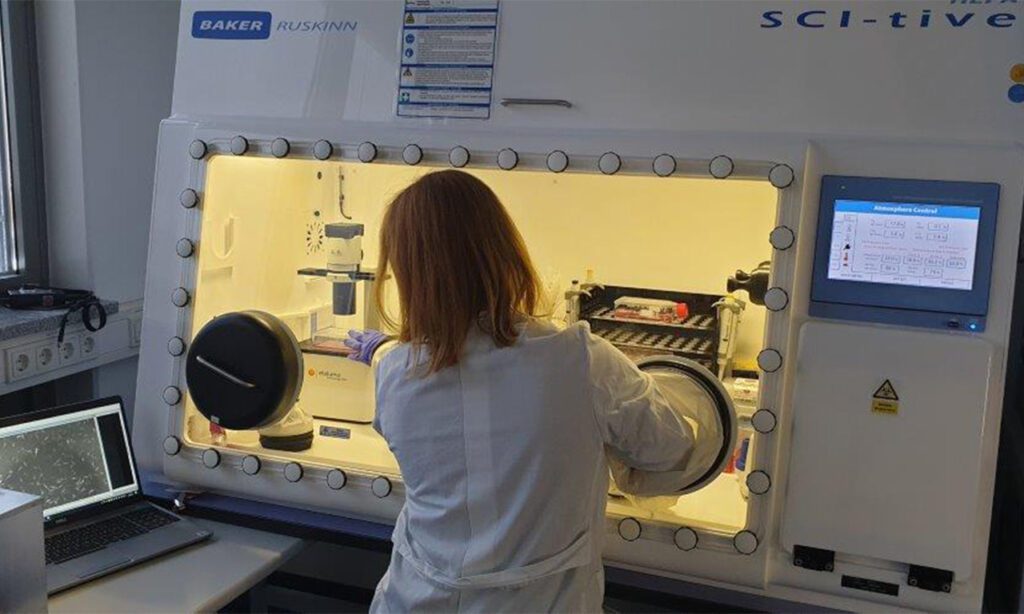
Isolation and Culture
In the living organism, stem cells reside in niches to keep them in an optimal state. Here, the oxygen concentration is much lower than in ambient air with 21 % O2. Consequently, when the cells are taken from their natural environment and cultured in the lab, they experience a notable change in their environment which results in changes to their functions. Similarly, when such cultured cells are transferred back into animals or into human patients, they are challenged again. This may result in inactivation or even death of the cells.
Given these challenges, we are working to optimize currently available cell culture procedures. The photo shows Nina at work.
With the advent of novel technical facilities like closed cell culture stations which allow to reduce oxygen concentration it may become feasible to better control the functionality of cells taken from organisms, including stem cells. The picture demonstrates this system that also provides adequate temperature and humidity. The cells are always retained within the workstation, e.g. also during microscopy. Consequently, the workstation also serves as incubator for the maintenance of the cells.
MSCs reside in the bone marrow but also in various other adult tissues and in birth-related tissues. In vitro and in vivo, they can differentiate into bone cells, cartilage cells, tendon and ligament cells, adipose tissue cells or muscle cells. In addition, MSCs are immunoprivileged and immunomodulatory. My team and I are interested in understanding the function of human MSCs under normal and inflammatory conditions which are addressed centering on specific intracellular signaling modules like SMAD proteins and TAK1 (for more information on TAK1 see “Previous Work).
